When we first saw the Notecard from Blues Wireless we were intrigued. Unlike most embedded cellular modems, the price of the Blues Wireless card includes a 10 year subscription and 500MB of data. A global cellular module with a built in SIM card with no monthly fee? That sounds enticing. After all, the last thing we need is a hot water heater monitor with a monthly cell phone bill!
The power of Qwiic just keeps expanding! Simply plug the Qwiic Cellular Notecarrier onto any enabled SparkFun Qwiic platforms (currently over 30) and you’ll be able to transmit data anywhere there is cell connectivity with a few lines of Python, Arduino, or JSON. The Blues documentation is superb. All API calls come with extensive C, Python, and JSON examples. While the Qwiic Cellular focuses on using the I2C bus for communication, USB and Serial can also be used to communicate with the Notecard. We found the USB was handy for immediate gratification and command debugging.
The Notecard module comes with integrated cellular, SIM, onboard GPS, accelerometer, and temperature sensor. The Qwiic Cellular product has everything you need: a carrier board (Blues calls them Notepads), the globally enabled NB-IoT & LTE-M M.2 based module (Blues calls them Notecards), and two U.FL cables all assembled and ready to go.
Currently 139 countries are covered with another 33 countries covered by installing a user-supplied external SIM socket and card. See the Covered Countries table for more information. Two RF cables connect the Notecard to external SMA connectors for cellular and GPS antennas (sold separately in related items below).
We do not plan to regularly produce SparkX products so get them while they’re hot!
Experimental Product: SparkX products are rapidly produced to bring you the most cutting edge technology as it becomes available. These products are tested but come with no guarantees. Live technical support is not available for SparkX products. Head on over to our forum for support or to ask a question.
- Notecard carrier board with built-in USB and Qwiic connectors for I2C communication
- 10-year data plan with 500MB (used over the life of the device) included with price of hardware
- Transmission Current: ~250mA or 2A (where GSM is required)
- Idle Current: 8uA (Power LED disabled)
- Built in LiPo connection and charging
- Empty SIM socket footprint available for use in countries where required (139 countries do not need this installed)
- Blue Quickstart Guide
- Blues Tutorial: Artemis Thing Plus and Qwiic Cellular
- Cellular Module Datasheet NOTE-NBGL-500
- Covered Contries
- Carrier Board Schematic - Special thanks to Ray Ozzie for catching a bad error in original design.
- Eagle Files
- Dimensional Drawing
- Hardware Repo
Qwiic Cellular Notecarrier - Blues Wireless Product Help and Resources
Core Skill: Programming
If a board needs code or communicates somehow, you're going to need to know how to program or interface with it. The programming skill is all about communication and code.
Skill Level: Competent - The toolchain for programming is a bit more complex and will examples may not be explicitly provided for you. You will be required to have a fundamental knowledge of programming and be required to provide your own code. You may need to modify existing libraries or code to work with your specific hardware. Sensor and hardware interfaces will be SPI or I2C.
See all skill levels
Core Skill: Electrical Prototyping
If it requires power, you need to know how much, what all the pins do, and how to hook it up. You may need to reference datasheets, schematics, and know the ins and outs of electronics.
Skill Level: Competent - You will be required to reference a datasheet or schematic to know how to use a component. Your knowledge of a datasheet will only require basic features like power requirements, pinouts, or communications type. Also, you may need a power supply that?s greater than 12V or more than 1A worth of current.
See all skill levels
Comments
Looking for answers to technical questions?
We welcome your comments and suggestions below. However, if you are looking for solutions to technical questions please see our Technical Assistance page.
Customer Reviews
5 out of 5
Based on 1 ratings:
1 of 1 found this helpful:
Easiest way to utilize a cellular modem!
Big fan of the Qwiic Notecarrier - it takes most of the pain of cellular away for me. Bit of a paradigm shift using Notehub instead of creating direct network connections, but I think it saves on data in the long run and makes it easy to route my data to my cloud app.

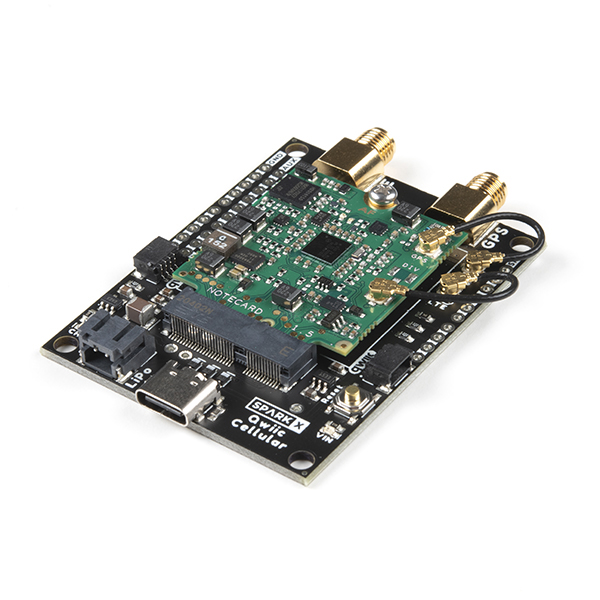

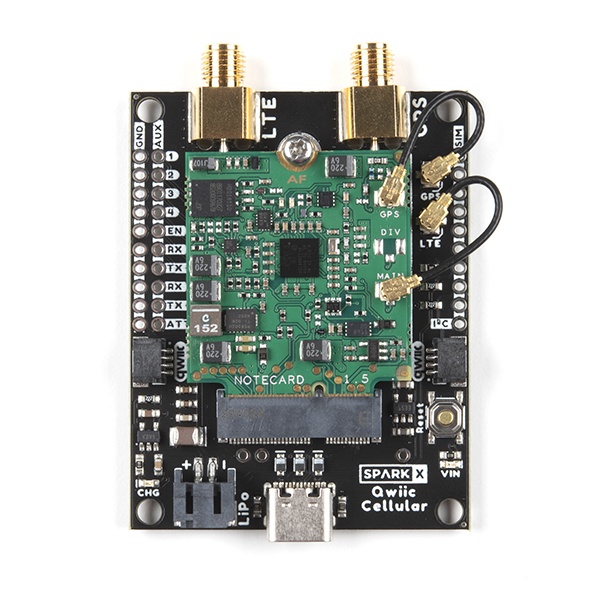
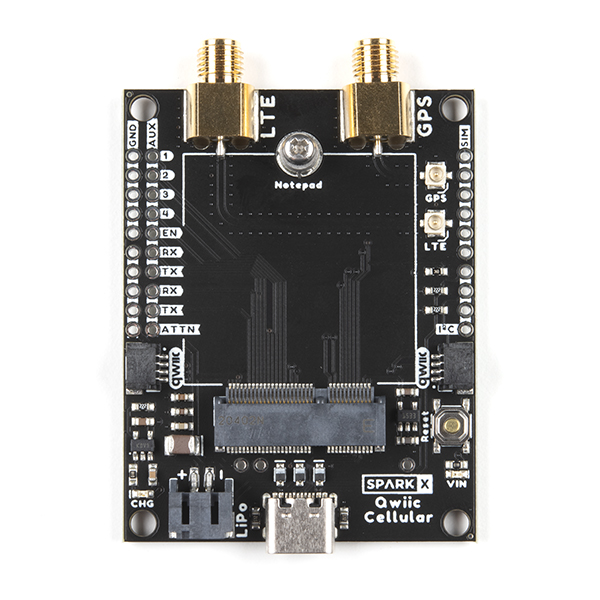

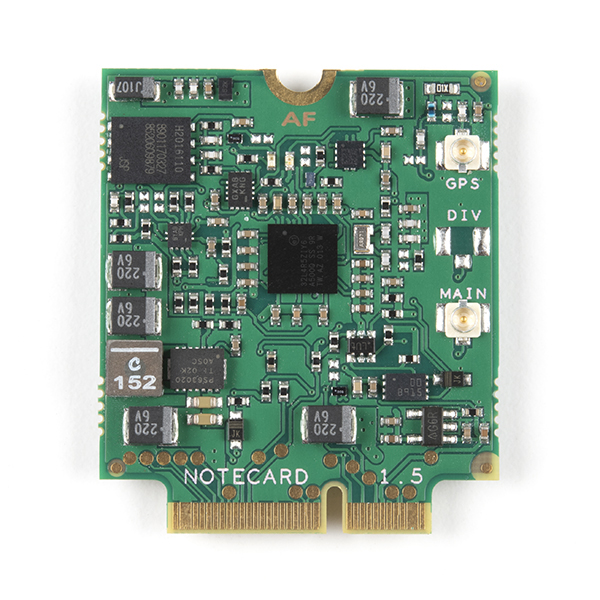
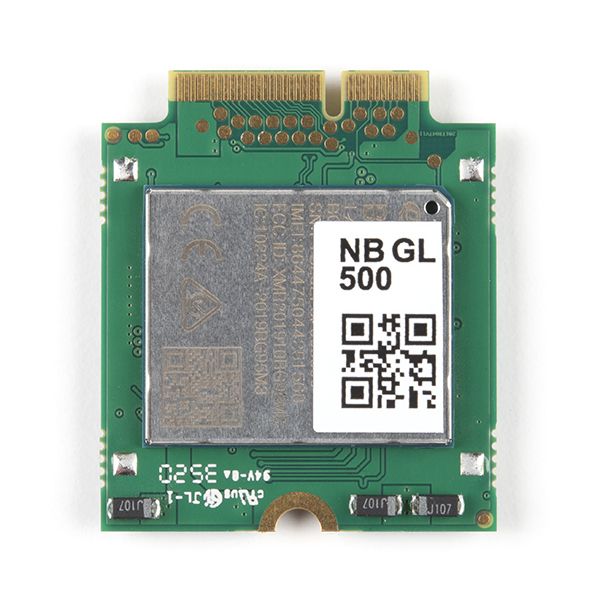
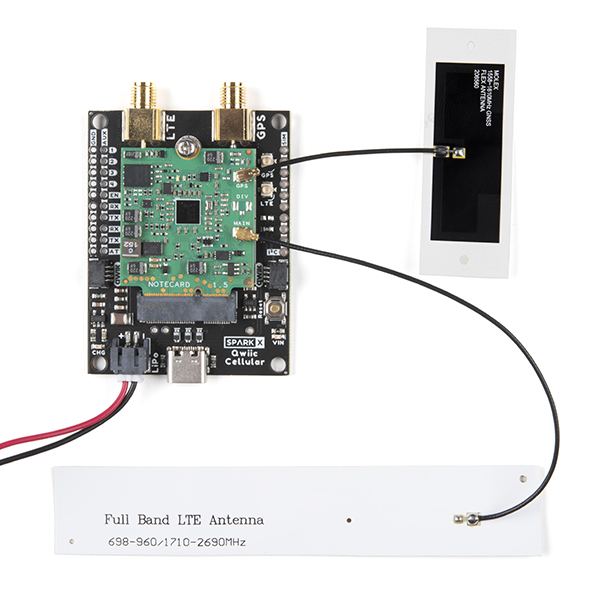
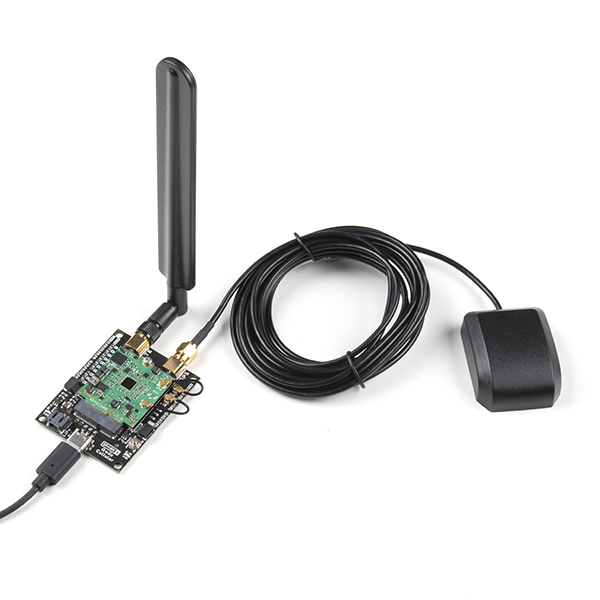
Is that 500mb per month or 500mb per 10 years?
Can you re-fil it? Update: Not really, they are still working on it.... https://discuss.blues.io/t/data-plan-purchase-more-data/237/2
It’s 500MB over the whole 10 years.
Does all data from your sensors have to travel through their NoteHub Cloud? Who can read it? What control does the user have over whether the Notehub is available?
By default, data flows through Blues Wireless's Notehub where there is a free starter plan. It's your data and only you have access to your projects, but although it is encrypted in-transit it is in the clear at-rest. If you want end-to-end encryption you can tunnel your encrypted data, and there are APIs that makes it easy.
If you don't want it to transit Blues Wireless's servers at all, there is an open source github repo (https://github.org/blues) with a 'starter notehub' that you can host yourself.
I was really excited about this but 500MB will only get me a few years at best. When and if it makes it to Red will it have the SIM socket so the user could use their own SIM?
While not populated, there's a footprint on the back of the board where you can add a SIM socket. PRT-00548 looks like it might fit but if it doesn't check the schematic for part numbers that will work.